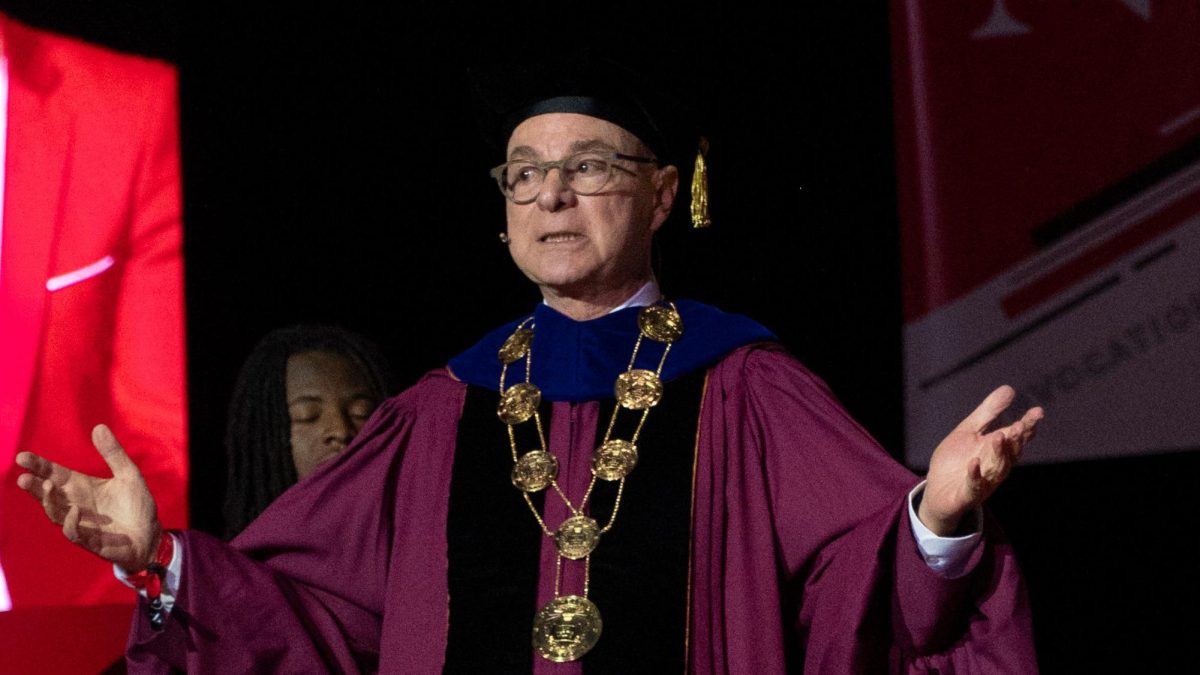It is remarkable enough that Northeastern’s track and soccer programs have achieved such success despite such financial difficulties. Nevertheless, it is unrealistic to believe that the units can maintain such consistent excellence for future seasons. So where does the solution lie for these programs? The consensus is through an upgrade in facilities, and an emphasis on the big-name sports on campus.
“To build a multi-purpose facility, as has been talked about for years, perhaps off of Columbus, in a parking lot right now, would just be a fabulous accomplishment for the university, and providing students on campus, residential students, with recreational and intramural opportunities,” Director of Athletics Dave O’Brien said. “Convocation could be there, commencement could be there, outdoor events could take place there, and oh, by the way, we might also be able to play football there six times a year. We also might be able to play field hockey there as well, and, depending on the width, maybe men’s and women’s soccer.
“I think many people would say that would be a tremendous addition to the campus, and in many ways it would almost be the final piece to the puzzle of legitimizing this transfer from commuter to residential, which is taking place here at Northeastern. How do we get that done is really the issue.”
O’Brien went on to point out that professional sports franchises and other attractions throughout the city may detract from a potentially solid fan base in the Northeastern Community. Former men’s soccer captain Nate Houghton scoffs at that idea.
“No, not at all. Because of the fact that hockey has a beautiful rink. That place is packed at every hockey game. They play Friday, Saturday at seven o’clock, when everybody goes out into the city. They go to the hockey game first. For most students, it’s free. They pay the $45 sports pass, and they get in free. It’s an activity that everybody loves to do before they go out. You’re not going to have an enormous stadium in Columbus, but people will go just because it’s there. People from around that don’t even attend Northeastern; they’ll go to the game too.
“What they need to do is take a sport like football, and get it to generate money for the rest of athletics; that’s what most schools do. Soccer, and volleyball, and track and field, those sports don’t make money for colleges; football does. But at this school, football loses money. It costs more to have a football team here than they make. They need to put a stadium in Columbus, and the football team will start making money,” he said.
Hart believes a new stadium will represent a commitment to athletic excellence for the university, while soccer coach Ed Matz acknowledges that the accessibility would add a new dimension to the school.
“I was saying to one of my assistants that wouldn’t it be great if there was an on-campus stadium where people could go to the football game, go grab dinner or something in the cafeteria, go back to their dorm, and then come back for the soccer game,” he said.
According to an anonymous source, there have been discussions about an initiative for a new stadium, particularly after the football team’s A-10 title-clinching victory at home over James Madison University. According to the source, there are three plans: a 5-year, 10-year, and 15-year plan. In one of the plans, there is the intent to turn Columbus lot into a multi-purpose facility.
Still, there are problems involved with the move. The proximity of the T is an issue, but the university bought the air space over the train area. This allows for better sound reduction, the minimizing of corporate space, and a larger stadium capacity. The other issue was with the residents that reside on Columbus Avenue, but Northeastern has been buying out the properties in the area (Davenport Commons, 780 Columbus, etc.).
According to the source, the school is attempting to phase out free parking in the lot, particularly on weekends, with the exclusion of weekend passes. This will cut off the meat of the community that park in the area, making it easier to close down the lot. The source notes that nothing is concrete in the plan that the city has, but the section is zoned off. As for the financial implications involved with such a project, the source says that money has been set aside from alumni donations, and that a large donor is in place, similar to the benefactor of the Behrakis Health Sciences Center.
Until then, however the programs continue to market the school and the city as a bargaining chip, as the finances allow them to do little else. The athletes, in turn, use that as motivation to maintain their standard of excellence.
“A lot of kids are drawn to Northeastern University because of our academics and our co-op program,” Matz said. “Also, the city of Boston, much like you were and everybody else was. We get a lot of interest in kids, and then some kids find out [that we cannot help them financially].
“Word is getting out that Northeastern provides an opportunity for people that might not get a scholarship elsewhere to come and step on the field. A lot of our kids on the men’s side weren’t offered scholarships to go anywhere else, and they take that as a little bit of a slight. They kind of come into the program with an attitude that they have something to prove, and we use that to our advantage.”
Even with that advantage, and the belief by many throughout the Northeastern community that O’Brien will do great things for Northeastern Athletics, the fact remains that Northeastern is pricey. While improved financial support may equate to more soccer tournaments and more track invitationals, all the school can offer in terms of recruitment is, according to Matz, “a great education, a chance to play D-I soccer in the best city in the United States, and a very valuable co-op program.”
A prospective scholar-athlete will receive all of those things … for roughly $38,000. Factor in the 5.5 percent increase, and that number goes up to almost $41,000. Do the math.








